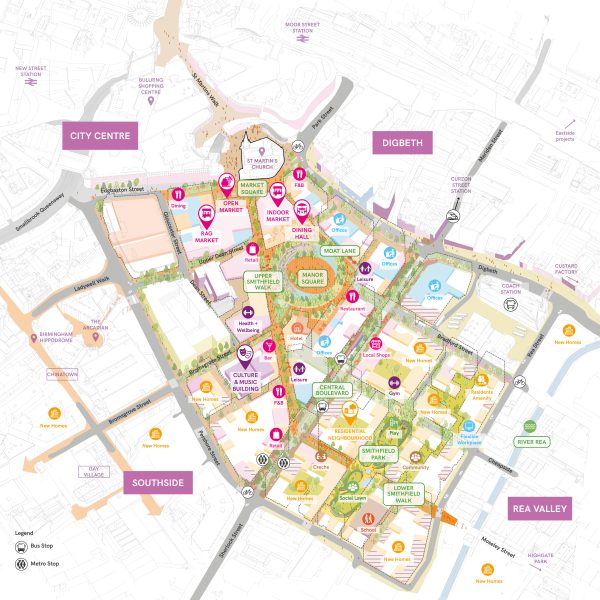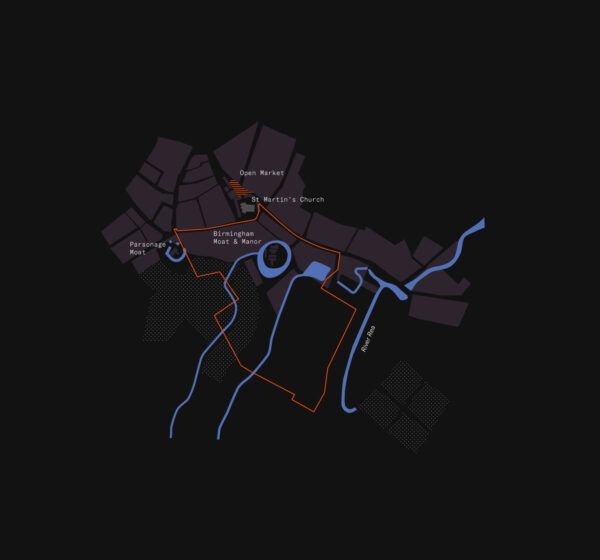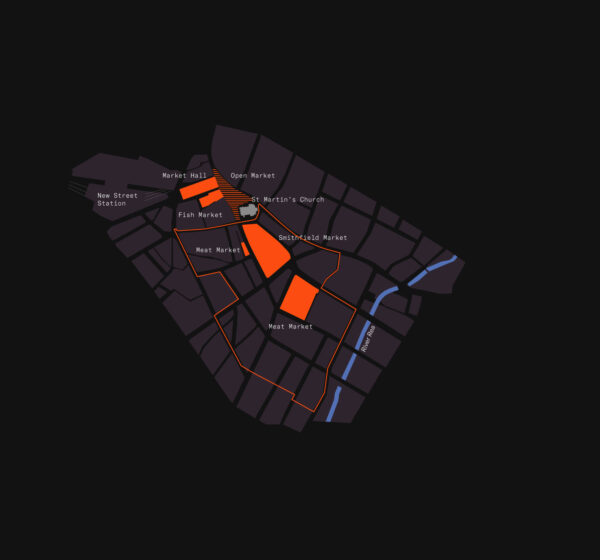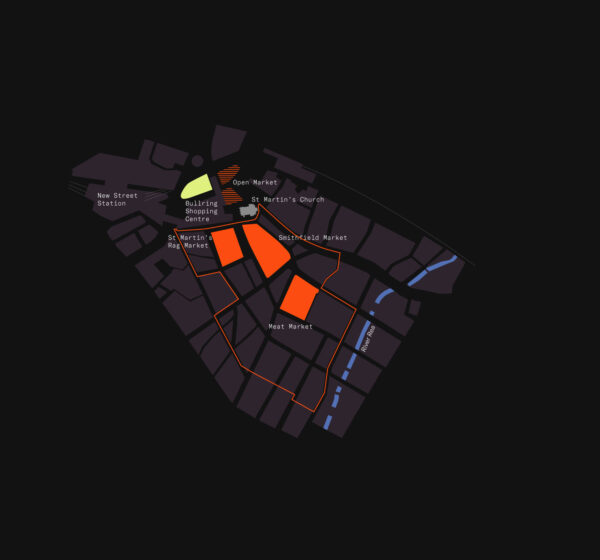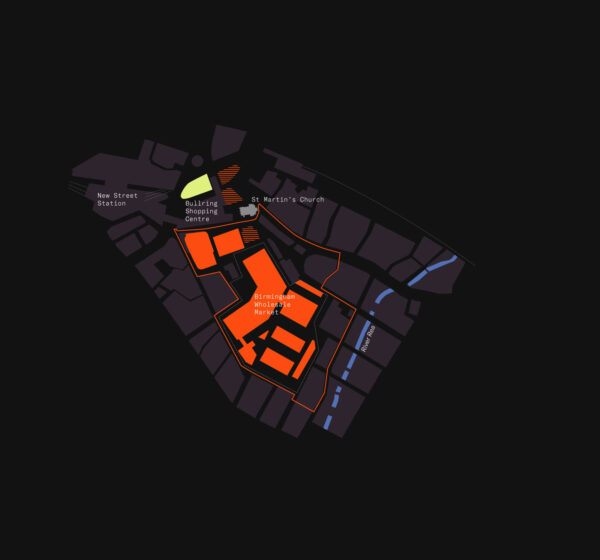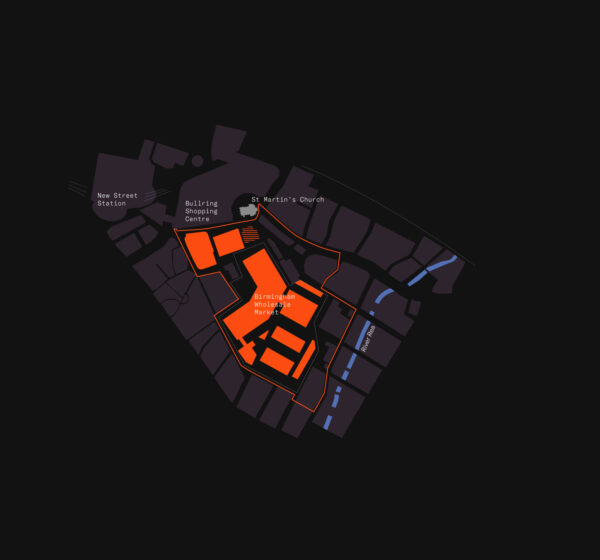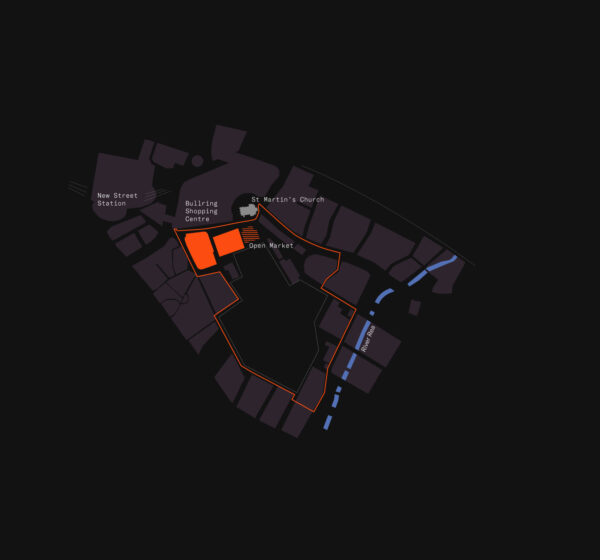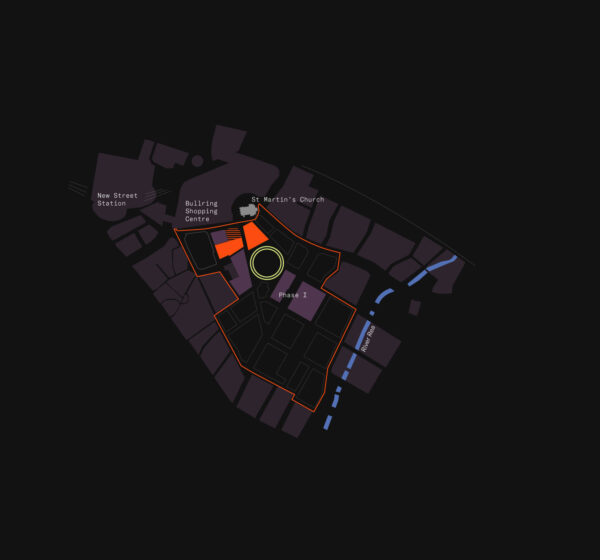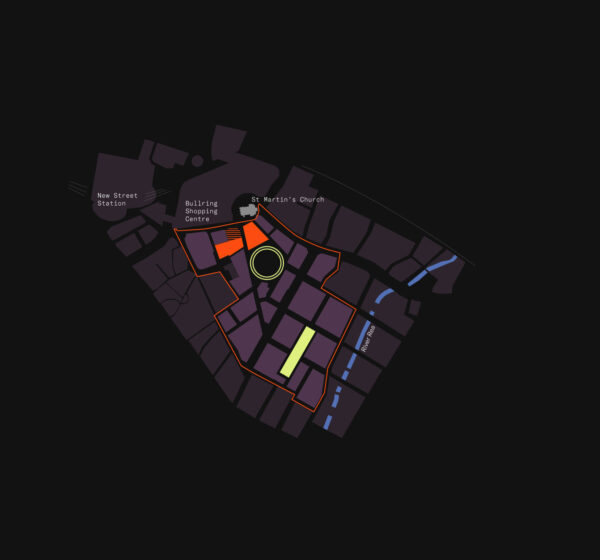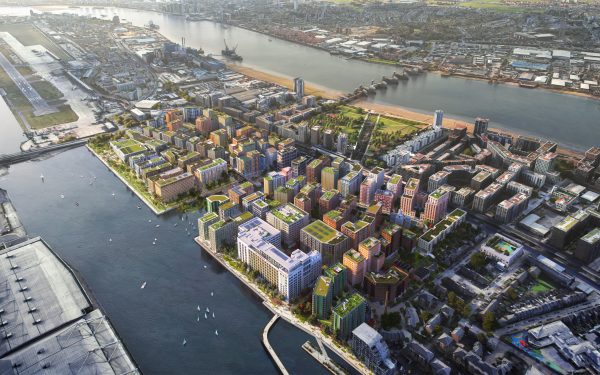Celebrating the origin point of a resurgent city
Smithfield Birmingham
Birmingham, UK
Birmingham is one of the most ethnically diverse cities in the UK, and the youngest major city in Europe. Sitting right near its core is Smithfield Birmingham, an area known for its rich trading history and home to the former wholesale markets. This predominantly vacant site will become a new urban quarter with an expanded city centre, unlocking economic and social opportunities to the communities living and working there.
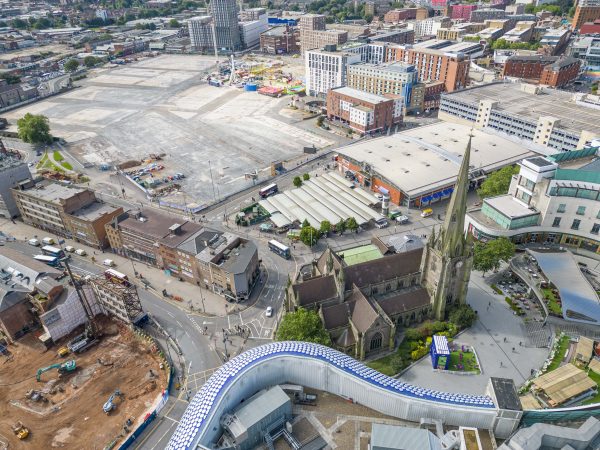
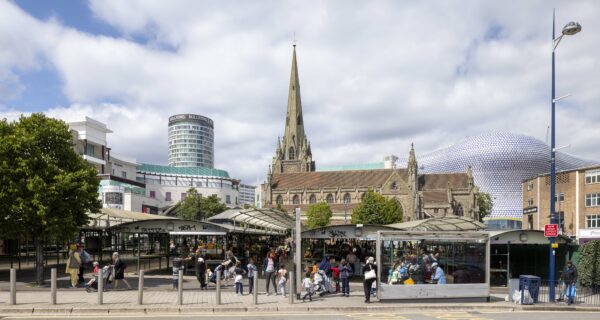
At the helm of this significant opportunity is the major landowner, Birmingham City Council, in a joint-venture partnership with Lendlease. Prior + Partners, in our role as masterplanners, have worked closely alongside this client group to develop the urban framework, and we’ve also led a wider team of architects, landscape architects, artists and other specialists to bring together designs that establish a cohesive and distinctive place.
As one of eight ‘central renewal areas’ in Birmingham’s ‘Our Future City Plan 2040’, our masterplan for Smithfield Birmingham exemplifies a zero-carbon future, creating a new home for the city’s historic Bull Ring markets as well as leisure and cultural spaces to support a significant number of employment opportunities. Thousands of much needed new homes of all sizes will be delivered, with integrated public transport and an extensive network of green streets and open spaces helping to improve living standards and the quality of life for all who call Birmingham their home.
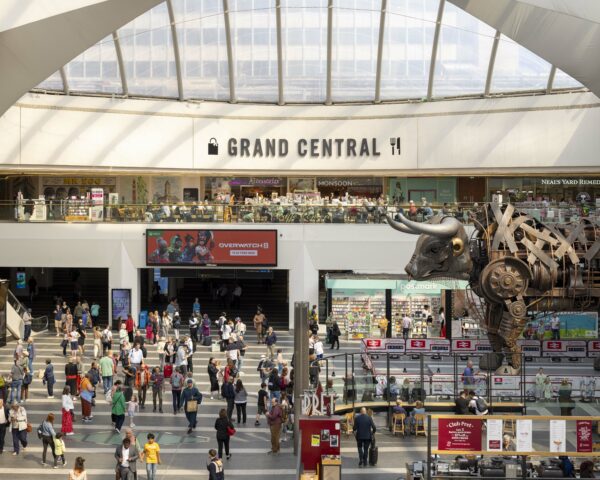
Smithfield, where it all started
Bringing everyone on the journey
Since Prior + Partners started working on Smithfield Birmingham in 2018, we’ve supported extensive public consultation and engagement activities, and met with thousands of local people, including market traders and users, residents, businesses, young people, disability groups, and hard-to-reach communities.
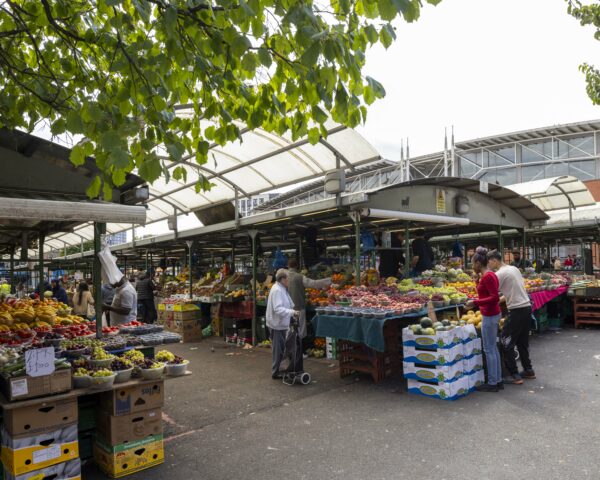
These conversations have helped to ensure the proposal reflects the priorities of its future users and bring the city along the journey from the beginning.
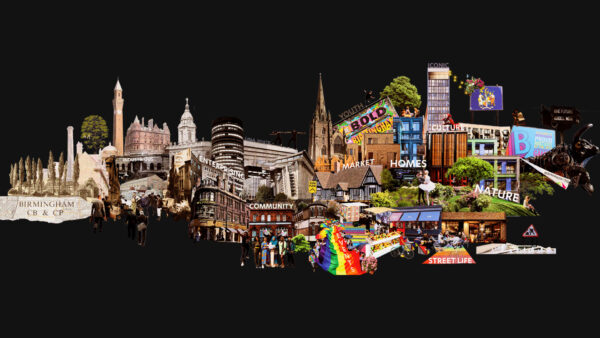
Learn from the past for a sustainable future
The proposed urban framework prioritises walking, cycling, and the use of public transport, and localised shopping, community and public spaces. By referencing the historic street patterns, the proposed network of streets and public spaces will also reconnect Smithfield Birmingham with the surrounding neighbourhoods.
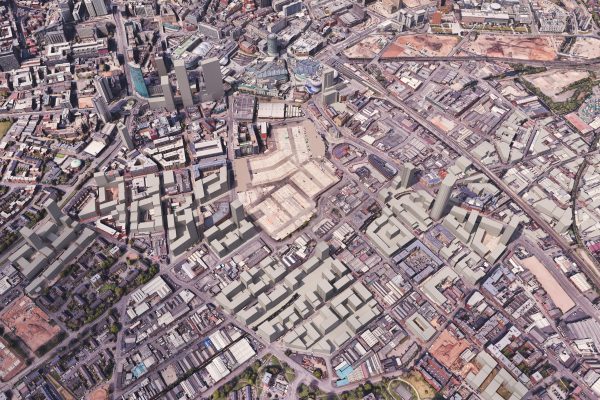
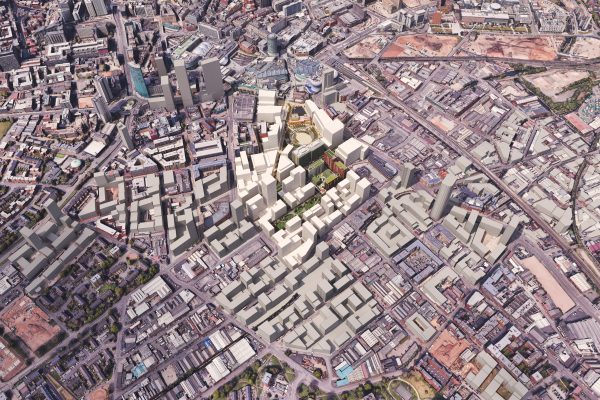
A public transport corridor running through the site will provide rapid bus services to wider Birmingham, and could also accommodate a future metro extension. A wide, green pedestrian boulevard connects the City Centre to the nearby Highgate Park, providing the catalyst to transform the wider Rea Valley area into an urban quarter of the City.
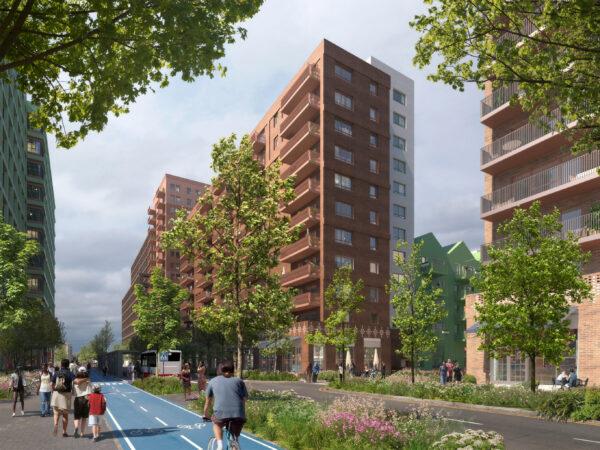
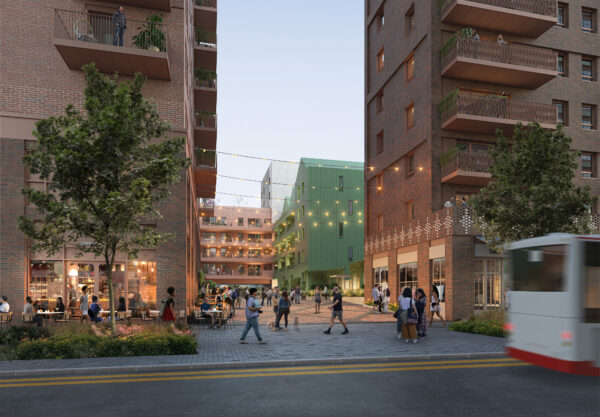
A place to congregate and celebrate
Our designs establish a new public open space, Manor Square, which has been sited to overlay where the historic Moat and Manor House once stood, over 850 years ago. Here, six to seven-thousand people can come together to celebrate Birmingham’s diversity, with a calendar of large-scale public events such as Pride, St Patrick’s Day, Diwali, Winter Wonderland and Lunar New Year.
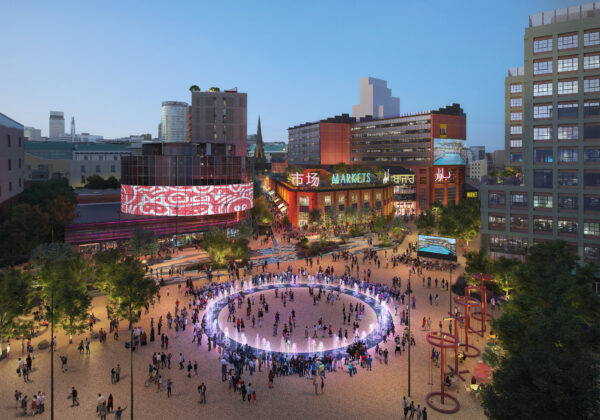
Forming part of the first phase of the development, and positioned between Manor Square and the adjacent St Martins Church, are two new market buildings. These sit alongside new workplace buildings, a hotel, family entertainment and leisure offers, a culture and music venue, as well as homes, to together establish day and nighttime activity, and help to propel Birmingham’s international standing.
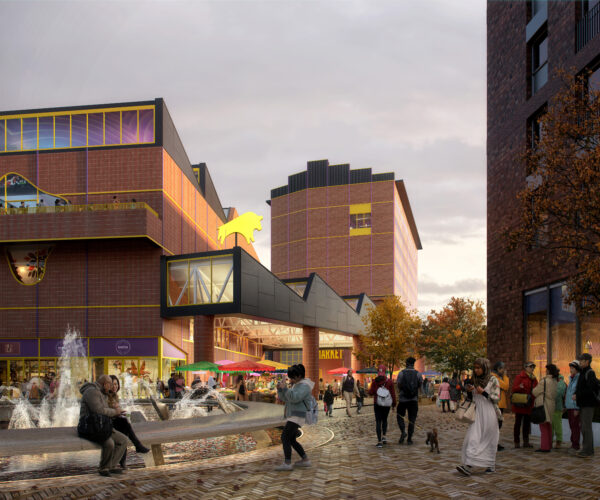
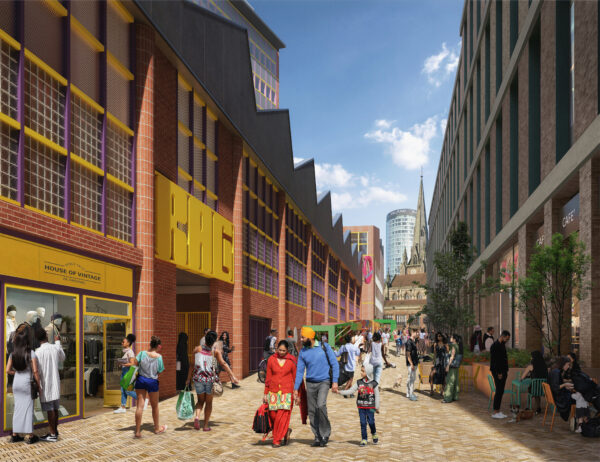
City centre living for all
A new family orientated residential neighbourhood will sit around a green open space, Smithfield Park. Together with the network of green streets, these verdant spaces will improve the area’s biodiversity and create a variety of natural habitats. They also assist with the microclimate, with extensive new tree providing shade in the heat of summer, while the tree pits and rain gardens will help attenuate water in rainy seasons. Smithfield Park will also be carefully sculpted to attenuate water and manage flooding, to avoid overwhelming the nearby River Rea.
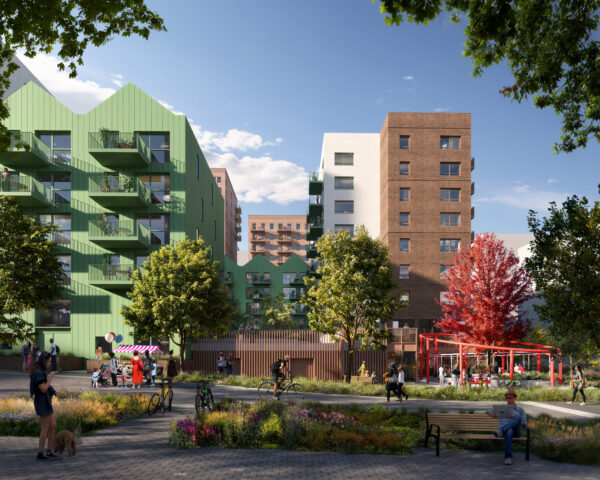
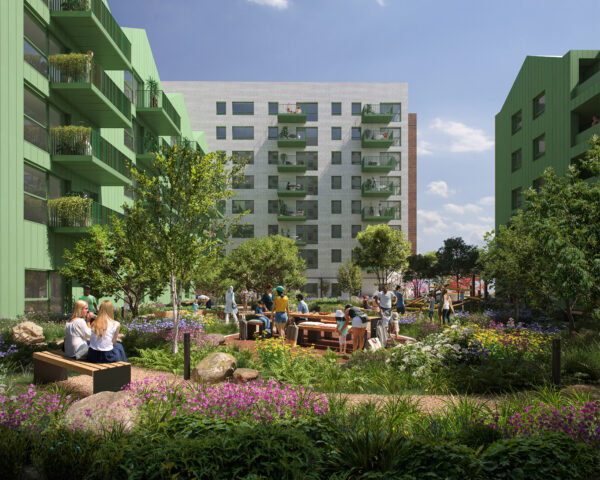
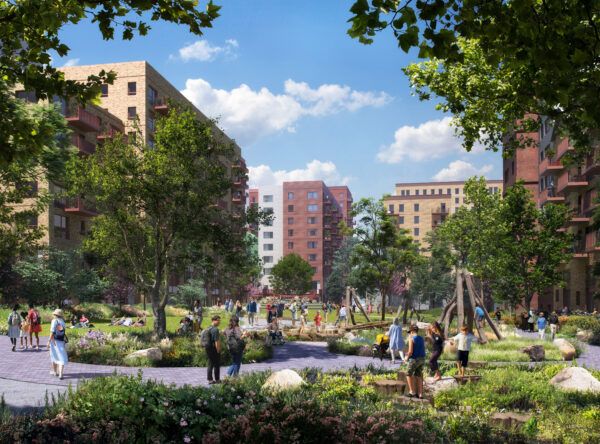
Be Bold Be Birmingham
Vibrant colours have been used throughout the designs to convey the city’s mantra of ‘Be Bold Be Birmingham’. With the support of locally based design partners, including Eastside Projects, Intervention Architecture and Minesh Patel Architects, we’ve sampled the many colours, materials, features and historic references that add to the character of this part of Birmingham, and embodied them into the Phase 1 buildings and public realm designs. This has been essential to the formation of the Smithfield identity, particularly after so much of the city’s historic character was lost in the post-war years.
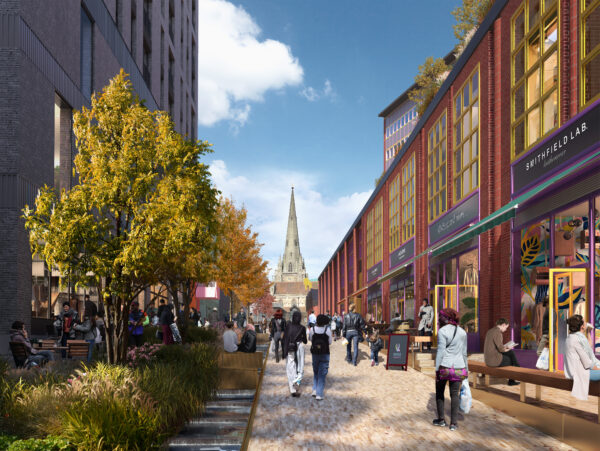
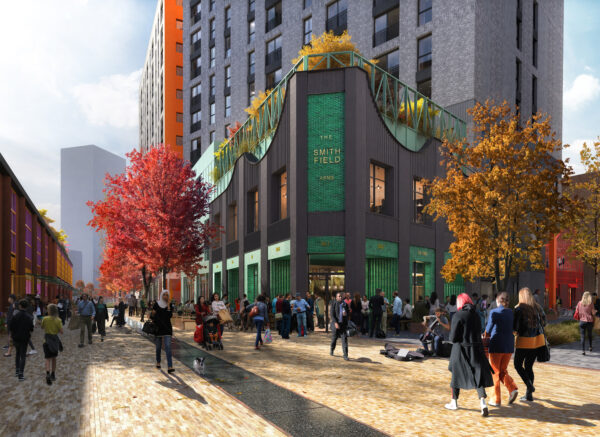
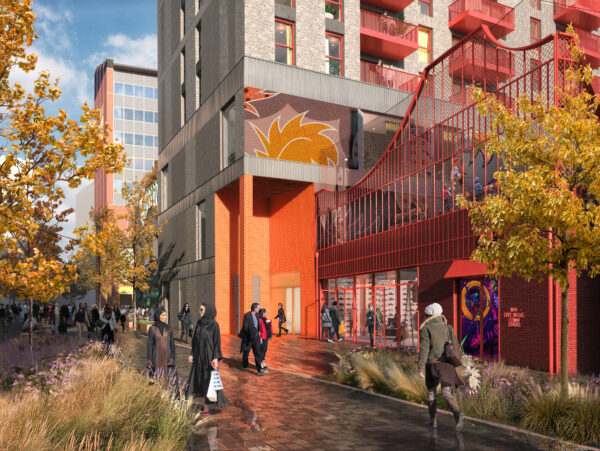
After submitting a ‘Hybrid Planning Application’ in December 2022, we have been working together with the design team to further refine the proposals, and will be submitting an Addendum to the Application by the end of 2023 to reflect the design updates. We are expecting a decision on the updated planning application from Birmingham City Council in early 2024.
